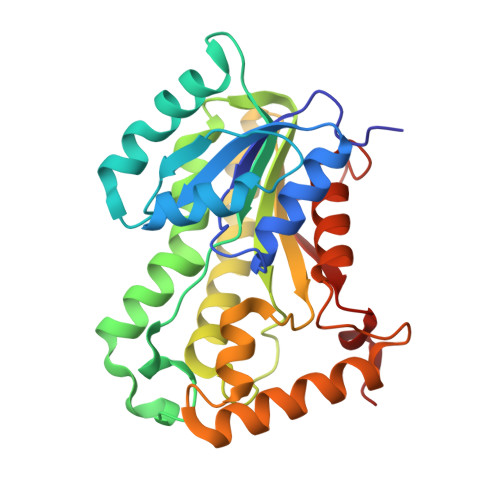Transfer of a point mutation in Mycobacterium tuberculosis inhA resolves the target of isoniazid.
Vilcheze, C., Wang, F., Arai, M., Hazbon, M.H., Colangeli, R., Kremer, L., Weisbrod, T.R., Alland, D., Sacchettini, J.C., Jacobs Jr., W.R.(2006) Nat Med 12: 1027-1029
- PubMed: 16906155
- DOI: https://doi.org/10.1038/nm1466
- Primary Citation of Related Structures:
2NV6 - PubMed Abstract:
Isoniazid is one of the most effective antituberculosis drugs, yet its precise mechanism of action is still controversial. Using specialized linkage transduction, a single point mutation allele (S94A) within the putative target gene inhA was transferred in Mycobacterium tuberculosis. The inhA(S94A) allele was sufficient to confer clinically relevant levels of resistance to isoniazid killing and inhibition of mycolic acid biosynthesis. This resistance correlated with the decreased binding of the INH-NAD inhibitor to InhA, as shown by enzymatic and X-ray crystallographic analyses, and establishes InhA as the primary target of isoniazid action in M. tuberculosis.
Organizational Affiliation:
Howard Hughes Medical Institute, Department of Microbiology and Immunology, Albert Einstein College of Medicine, 1300 Morris Park Avenue, Bronx, New York 10461, USA.















